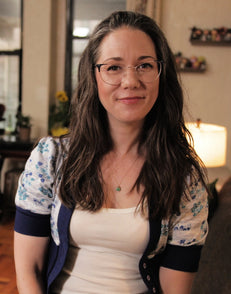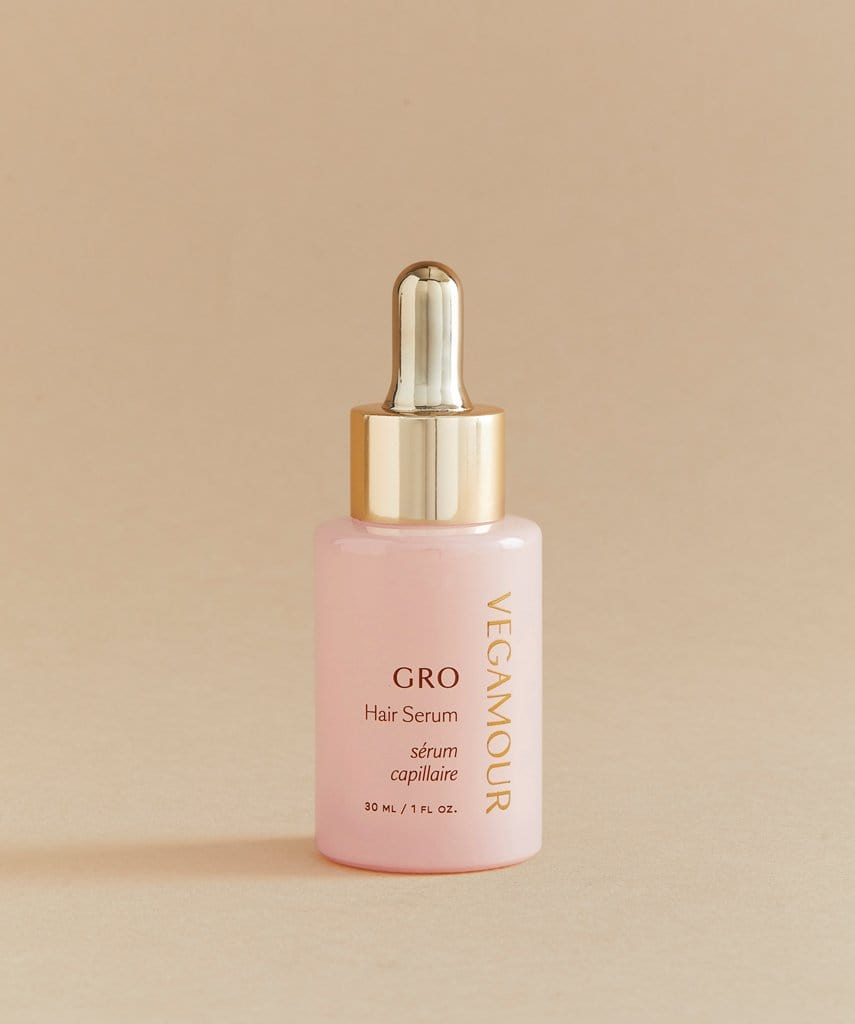What Is Alopecia Areata? One Type of Hair Loss Explained
Hair loss can be a painful topic, but knowledge is power. Learning more about the different types of hair loss can help you better understand your personal situation and effective ways to approach it.
Alopecia areata is a condition that affects almost 7 million Americans and impacts people of all ages and ethnicities. It’s also a condition that can be quite different for each person that has it.
Read on to understand the different alopecia areata causes, impacts and discover natural hair wellness products.
What Is Alopecia Areata, Exactly?
Alopecia is a general medical term for hair loss, and alopecia areata — also known as AA — is a specific type of hair loss that is most commonly characterized by round coin-sized patches of hair loss. While this patchy balding often happens on the scalp, it can also happen on the face and body.
This type of alopecia can come on quite suddenly, but it can also develop, worsen and spread over time. Patients might have a single episode that resolves itself without treatment, though hair loss caused by alopecia areata might also be recurring or permanent.
It’s a condition that can vary quite a lot from person to person. “More severe cases can result in total hair loss of the scalp or entire body; however, most cases are much less severe and usually responsive to treatment,” said Dr. Michael Lorin Reed, a board-certified dermatologist and professor of clinical dermatology at New York University who specializes in scalp disorders and skin disease.
AA has a spectrum of severity with regards to the location and amount of hair you lose. These two things will depend on the variety of alopecia areata.
That said, it's only one type of hair loss — there are actually several. You can read more about other types of hair loss, such as:
Trending: Jada Pinkett Smith's Alopecia Journey Is No Joke
Hold On: There Are Different Types of Alopecia Areata?
“There are different flavors of alopecia areata,” according to Dr. Rina Allawh, a board-certified dermatologist with Montgomery Dermatology. In fact, there are several different conditions considered to be part of the alopecia areata family.
While patchy coin-sized hair loss is most common, AA can also include other hair loss types:
- Persistent patchy alopecia areata: Patchy hair loss that continues over time without developing into a more serious form of hair loss (like totalis or universalis, covered below).
- Diffuse alopecia areata: Hair thins evenly all over the scalp. This type is often mistaken for other hair loss conditions like telogen effluvium or female pattern balding.
- Ophiasis alopecia: A unique band-shaped pattern of hair loss that occurs on the sides and lower back of the scalp (called the occipital region).
- Alopecia totalis: A more extensive scalp hair loss that involves a complete loss of hair on the head.
- Alopecia universalis: A complete loss of body hair.
What Causes Alopecia Areata?
The exact causes of alopecia areata aren’t well understood just yet, though it is generally accepted to be a type of hair loss caused by an autoimmune disorder.
When functioning normally, the immune system protects the body by fighting against foreign invaders like viruses and bacterial infections. Autoimmune disorders develop when the body mistakes healthy cells or tissue for foreign invaders.
With alopecia areata, the immune system attacks the structures responsible for hair growth called hair follicles. This mistaken immune response weakens the follicles, causing them to shrink and shed the hair.
Many people who experience alopecia areata have a family history of the condition and/or other autoimmune disorders, like Type I diabetes or rheumatoid arthritis, which points to a genetic cause.
In addition to that, alopecia areata might be more likely if you have another autoimmune disorder and is particularly common in people who have asthma, hay fever, thyroid disease, vitiligo (a condition in which patches of skin lose their color), pernicious anemia and Down syndrome.
Some good news: According to the American Academy of Dermatology, many who develop alopecia areata are otherwise healthy and remain healthy aside from the patchy hair loss.
See: Losing Hair During the Pandemic? You're Not Alone
What Are the Symptoms of Alopecia Areata?
As previously mentioned, the most common telltale alopecia areata symptom is round coin-sized patches of hair loss on the scalp. You might also experience hair loss on the face (think: eyelashes and eyebrows) or anywhere else on the body.
“These patches are usually asymptomatic, meaning they are typically not itchy or painful. Some may describe areas where the skin on the scalp appears pink before the hair loss occurs, and this may be due to the underlying inflammation in the scalp,” added Dr. Allawh.
Unfortunately, alopecia areata is unpredictable and spontaneous. It can both come on and resolve itself suddenly, making it hard to treat and manage. If you develop this immune condition, you might experience a single hair loss episode that resolves and never comes back, but you might also suffer from bouts of hair loss for the rest of your life. In severe cases (like alopecia totalis and universalis), you might lose all the hair on your head or even your whole body.
Find Out: Hair Loss vs. Breakage — Why the Difference Matters
How Is Alopecia Areata Diagnosed?
If you notice new hair loss or suddenly develop a bald patch on your head or body, see your primary care physician or dermatologist right away. “Consultation and evaluation with a dermatologist as early as possible is key to successful treatment,” advised Dr. Allawh.
Your doctor will examine the affected areas and might take a small biopsy of skin to help confirm the diagnosis and rule out other causes like a fungal infection of the scalp. Because a variety of health conditions can cause hair loss, your doctor will probably do blood tests to rule other common causes of hair loss like iron deficiency, thyroid dysfunction or a hormonal imbalance.
Find Out: How Quickly Does Hair Typically Grow?
What About Alopecia Areata Treatment?
At present, there is no cure for AA, but there are a few options for treatment of alopecia areata that are used to either suppress the immune system’s attack and/or stimulate the affected follicles to encourage hair regrowth.
It’s important to know that not all treatment options work for everyone, and it might take some trial and error to find a treatment option that works for you. It is also possible that treatment won’t work at all or that your hair might fall out again after treatment stops.
Different treatments might be more or less appropriate depending on what kind of alopecia areata you have and how severe the hair loss is. Treatments tend to be most effective for people who have mild forms of the disease (less than 50% hair loss).
Each treatment has different rates of success, along with potential side effects. Be sure to talk to your doctor about the pros and cons of any treatment option you decide to pursue.
Topical Treatments
There are a few different topical creams and solutions that can be used to treat alopecia areata. Three of the most common include:
- Corticosteroids: Topical steroids can help reduce inflammation around the hair follicle. They come in different brands, strengths and preparations, like solutions, lotions, foams, creams or ointments.
- Immunotherapy: Chemicals like diphencyprone (DPCP), dinitrochlorobenzene (DNCB) or squaric acid dibutyl ester (SADBE) are applied to the scalp to cause an allergic rash (allergic contact dermatitis) that alters the immune response and stimulates new growth.
- Anthralin: A common treatment for psoriasis that can also be helpful for alopecia areata. It is a thick dark brown topical that is applied daily for a period of time (30 minutes to several hours, depending on the severity of hair loss) and then washed off.
Also: The Best Foods to Eat for Healthy Hair
Oral Medications
Oral medications to suppress the immune response might be recommended for severe cases of alopecia areata where hair loss is extensive.
- Immunomodulators: Drugs like tofacitinib (Xeljanz) and ruxolitinib (Jakafi) have shown promise as a treatment option for severe cases by changing the immune system’s response and reducing inflammation.
- Immunosuppressants: Drugs like methotrexate and cyclosporine can be used to suppress the immune response that is causing the hair loss. These drugs can have serious side effects and are usually taken for only short periods.
- Corticosteroids: These drugs are typically used for severe cases of alopecia areata and can have a variety of serious side effects.
Read: Hair Loss Is a Potential Side Effect of These Medications
Injections
Corticosteroids can also be injected into the affected areas of the scalp fairly painlessly using tiny needles. This is the most common initial defense against alopecia areata since it has few side effects. While some folks will see new hair growth in the affected areas within a few weeks, this treatment won’t prevent new hair loss from starting.
Related: What to Expect From PRP for Hair Loss
Light (Photo) Therapy
The use of UV light is used for a variety of skin conditions because of its ability to impact the skin’s immune system and response. A 2019 review suggests that more research is needed, but therapies using an excimer laser treatment seem to be effective with limited side effects.
Also: Why Some People Experience Hair Loss After Surgery
What Can I Expect If I Have Alopecia Areata?
As mentioned, AA can be an unpredictable condition. Since it’s not fully understood to begin with, it cannot be prevented. And at present, there is no cure for alopecia areata.
Some people who develop alopecia areata might have a particularly difficult experience with the condition. Research suggests that folks who share these traits or symptoms also tend to experience more severe cases of AA that can be chronic and harder to treat:
- AA first occurs at a young age.
- Abnormalities are present in the surface of nails (like tiny pits, dents, or grooves).
- Family medical history includes alopecia areata.
- Other autoimmune conditions are present.
The good news is that most people who have limited patches of hair loss will recover, with hair spontaneously growing back within a year (even with no treatment). A smaller number (7%-10%) will experience a more chronic form of AA.
Tips For Recovery and Coping With AA
Hair loss can be difficult to cope with, and AA, in particular, can be a doozy since it is spontaneous and unpredictable. Living with alopecia areata can be really hard.
McKenna Reitz is a mother who developed alopecia areata shortly after the birth of her third child. It quickly escalated to alopecia universalis, and McKenna lost all of her hair. After a trying period of seeing specialists and trying various forms of treatment, nothing helped.
Today McKenna is an inspirational speaker, a life coach and host of the Challenge Yourself: Coaching + Leadership podcast. As an advocate for the National Alopecia Areata Foundation, she encourages anyone dealing with AA to seek support and stay positive.
“Lean on people for support. As much as we feel that our hair is our identity, it is our character that defines us. However, it will take time to transform your mindset, and that is okay! Know you are not alone,” she said.
In addition to any treatments you choose, be sure to support both healthy hair growth and immune response by actively managing stress, eating a well-balanced diet and taking supplements. Many people with autoimmune conditions elect to follow the Autoimmune Protocol Diet to minimize inflammation in the body, and new data suggests that diet can impact AA.
Learn More: What Causes Hair Loss?
Final Takeaways
Alopecia areata (AA) is a type of hair loss that is linked to dysfunction of the immune system. It’s commonly identified by the round coin-sized bald patches that happen on the head, though it can happen anywhere on the body.
It is a condition that varies from mild (a few patches of hair loss) to severe (significant to total hair loss on the head or even the whole body), and there are different types of alopecia areata.
The exact cause of AA is not known, and there is no cure. There are, however, several different options for the treatment of alopecia areata. In the majority of cases, AA will resolve, and hair will regrow within a year.
If you think you might have alopecia areata hair loss, see your primary physician or a dermatologist right away to rule out other possible causes of hair loss and to discuss a robust treatment plan.
Join the Hair Wellness Community
Losing hair is hard. At VEGAMOUR, our mission is to create products to help you look and feel your best on the outside, but we want to help you feel better inside as well. We've created this private Facebook group for women on hair wellness journeys just like you. It's a safe space to learn and share your stories with others, express your feelings, swap blogs and practical tips or just read about other people's stories.
More From VEGAMOUR
- What You Should Know About Vitiligo and Alopecia
- Can Your IUD Be the Reason You're Losing Hair?
- What Is Folic Acid? And How It Impacts Your Hair
- Fact or Myth: Does Wearing a Hair Cause Hair Loss?










